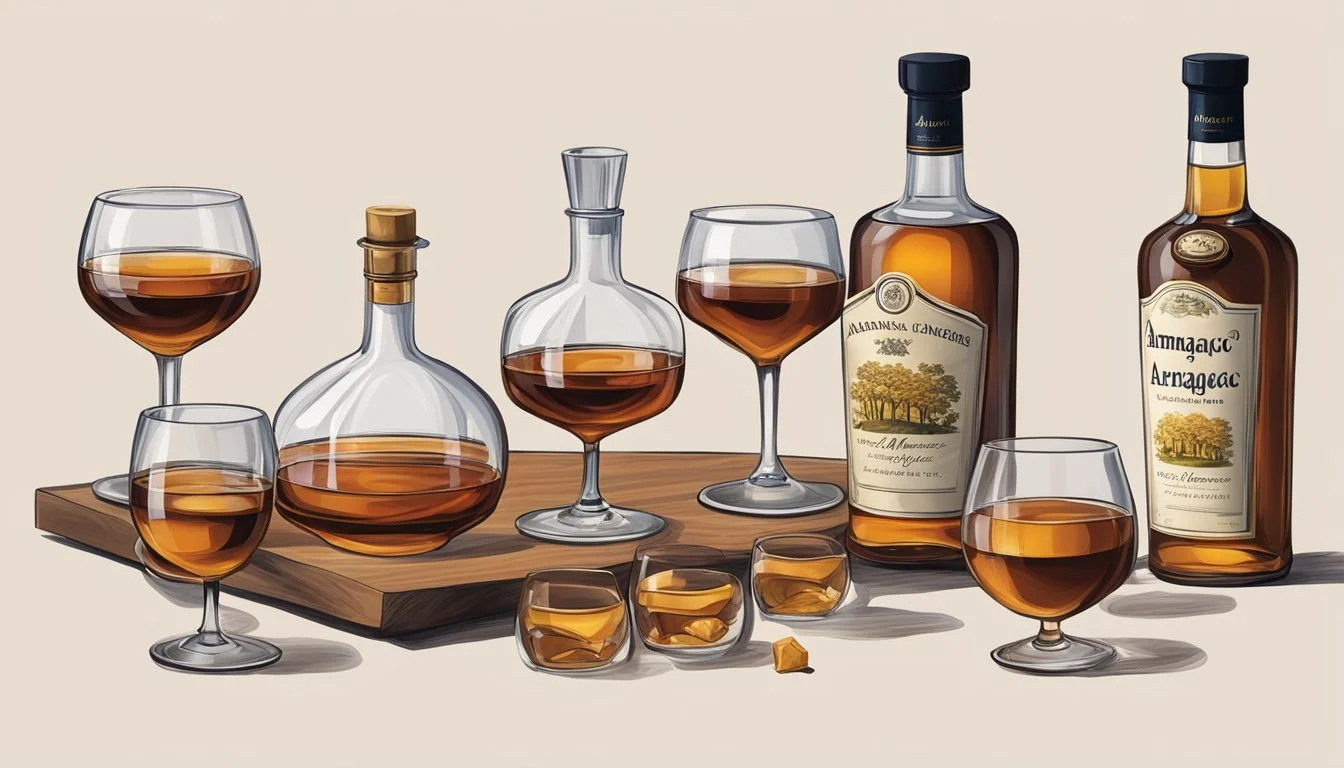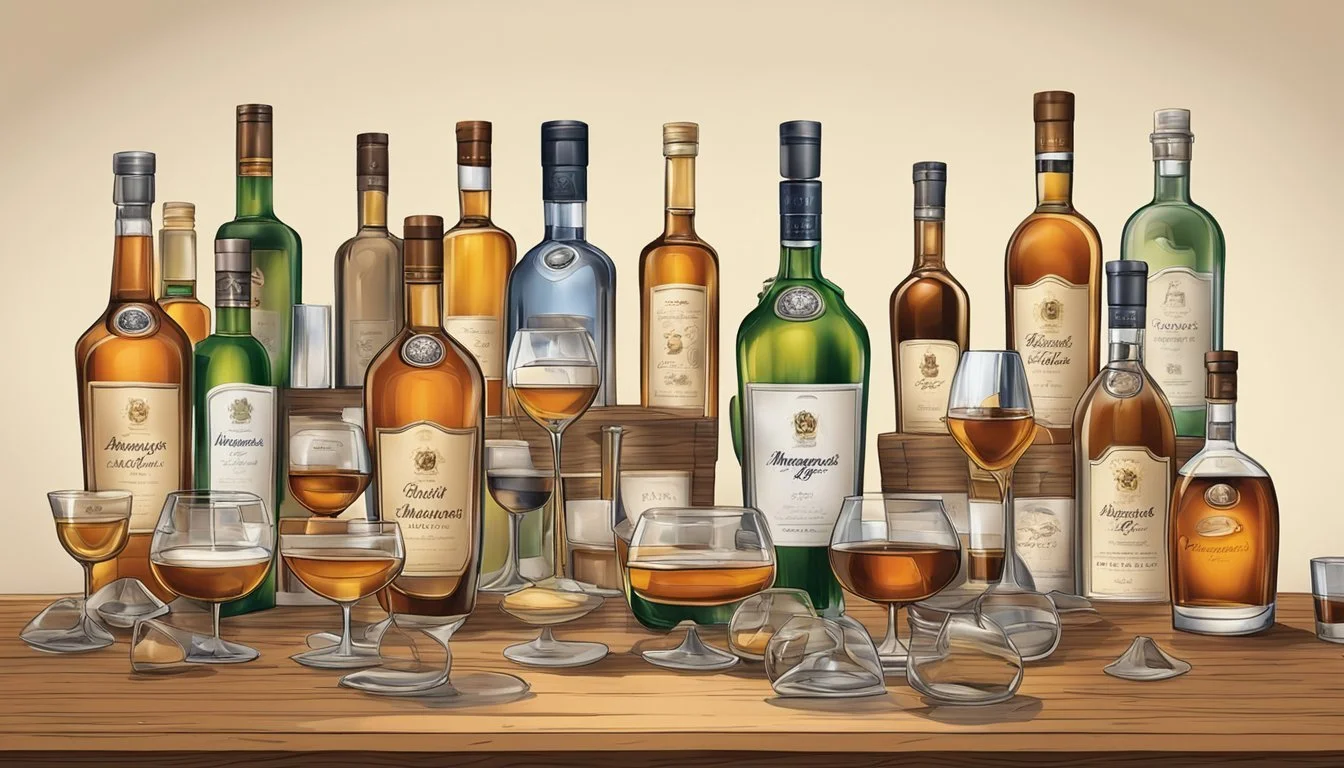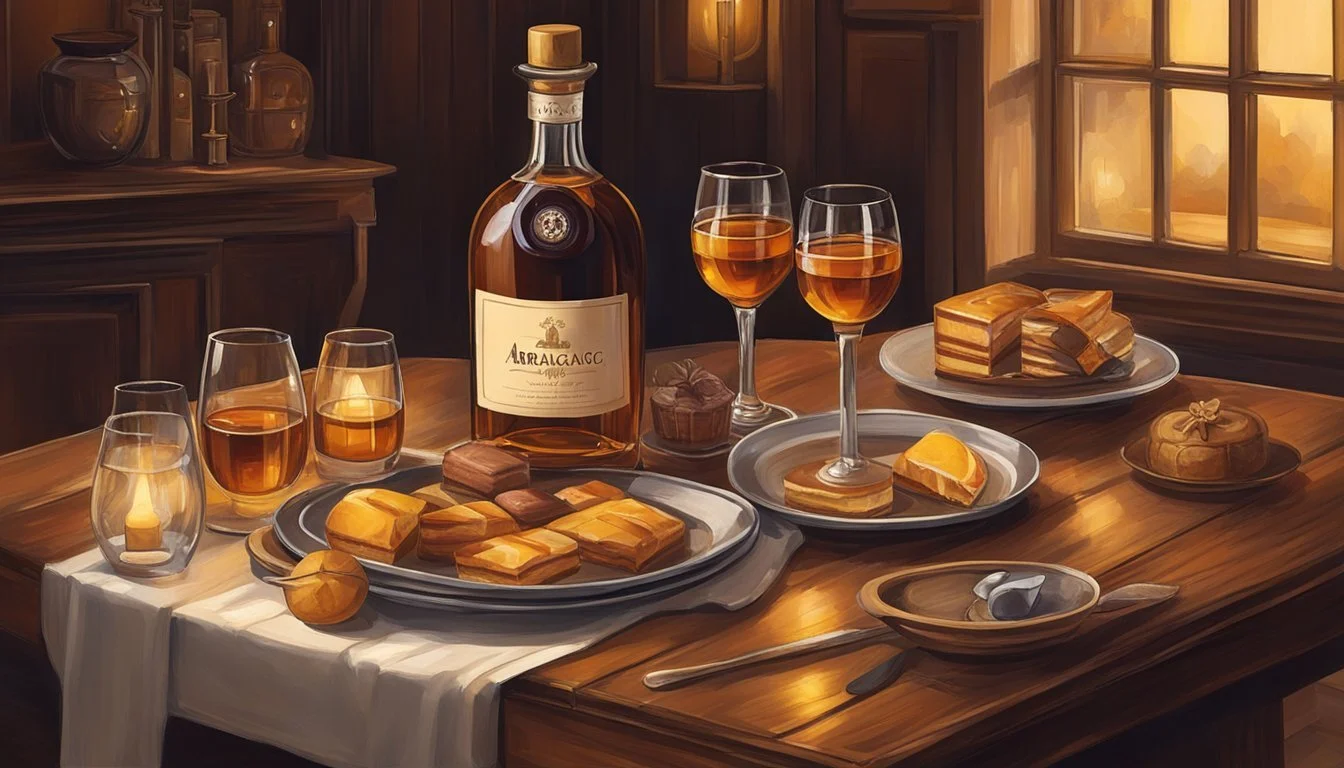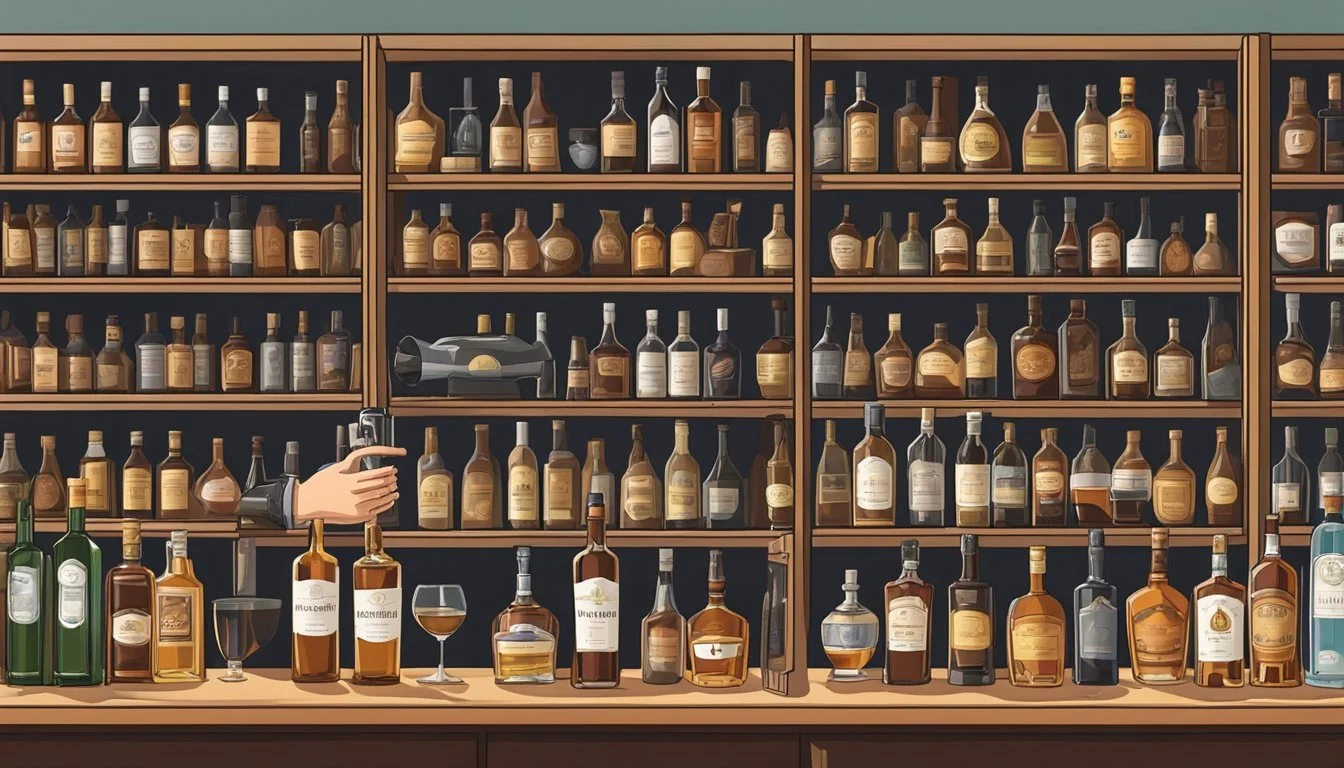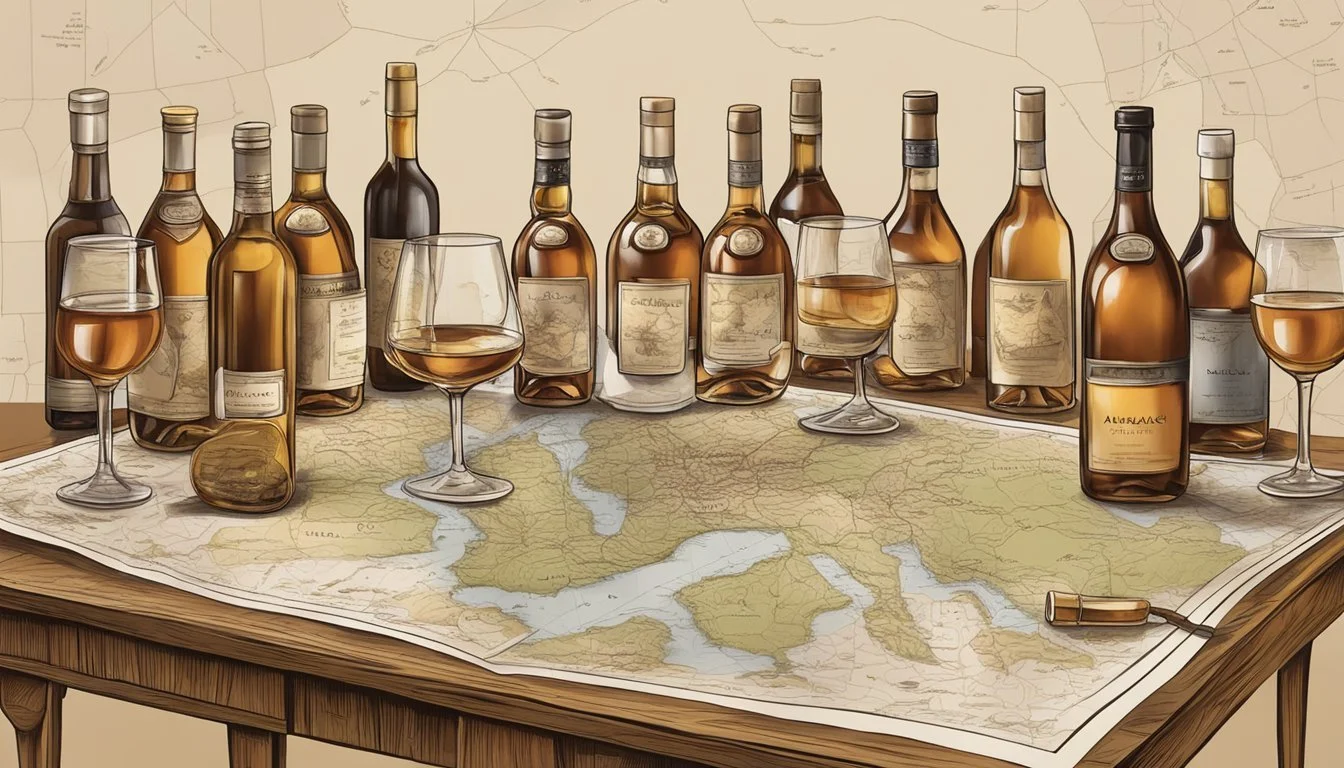How Many Servings of Armagnac Is Too Much
Understanding Safe Consumption Limits
Enjoying a fine glass of Armagnac can be a delightful experience, but it’s essential to understand how much is appropriate to consume. Consuming more than two to three servings of Armagnac in one sitting may be too much and could lead to negative health effects. As with any alcoholic beverage, moderation is key to enjoying the complex flavors and heritage without compromising well-being.
Armagnac, distilled only once, often retains more natural flavors and health benefits such as antioxidants, which may support heart health and blood circulation. Sipping on this exquisite brandy slowly, rather than drinking it quickly, allows one to savor its rich history dating back to the 13th century and its deep, aromatic profile.
Though it might be tempting to indulge in several glasses due to its smooth taste, excessive consumption can lead to unwanted consequences like impaired judgment and potential health risks. Limiting intake ensures that this centuries-old spirit remains a source of pleasure and tradition, allowing enthusiasts to appreciate each sip fully.
Understanding Armagnac
Armagnac is a unique type of brandy with a rich history that sets it apart from other spirits. Its production is deeply connected to the terroir of Southwest France, offering distinctive flavors and characteristics.
History and Origin
Armagnac is the oldest brandy in the world, with roots tracing back to the 13th century. Originally used for medicinal purposes, it became a recognized spirit in the early 15th century. The region of Gascony in Southwest France is the birthplace of Armagnac.
Armagnac's history includes innovations from the Romans who brought grapevines to the area. With centuries of tradition, Armagnac has evolved into a celebrated spirit, valued for its depth and complexity.
Distinction from Cognac and Other Brandies
Armagnac and Cognac are often compared, but they have notable differences. Armagnac is distilled only once, while Cognac undergoes a double distillation process. This single distillation gives Armagnac a richer, more robust flavor profile.
Cognac: Often smoother and lighter due to double distillation.
Other Brandies: Various brandies worldwide differ significantly due to local production methods and grape varieties.
Another distinction lies in aging; Armagnac's aging process emphasizes the unique characteristics of its terroir, adding complexity and depth.
Terroir and Appellations
The terroir of Armagnac is crucial in shaping its unique flavors. There are three main appellations:
Bas Armagnac: Known for producing the finest Armagnacs with delicate and fruity notes.
Haut-Armagnac: This area produces less Armagnac, often lighter and more fragrant.
Ténarèze: Offers robust and full-bodied Armagnacs, often used in blends.
The influence of the region's climate, soil, and grape varieties ensures that each Armagnac possesses distinctive qualities reflective of its origin. These factors combined create a diverse and rich palette, making Armagnac a distinct and treasured spirit.
Composition and Production
Armagnac, a unique type of brandy from the Gascony region in Southwestern France, boasts complex flavors owing to its distinctive grapes, meticulous distillation, and aging process.
Key Grape Varieties
The primary grapes used in Armagnac production include Folle Blanche, Ugni Blanc, Colombard, and Baco 22A.
Ugni Blanc is prized for its acidity and neutral flavor, which enhances the spirit's aging potential.
Folle Blanche contributes delicate floral aromas and was historically the most important variety until its susceptibility to disease reduced its dominance.
Colombard adds spicier and fruitier notes.
Baco 22A, a hybrid grape, provides body and rich flavors, especially post-aging. These varietals are harvested, fermented into wine, and then distilled into eaux-de-vie.
Distillation Process
Armagnac's distinct character arises from its traditional distillation methods.
It typically employs the alembic armagnaçaise, a continuous column still, contrasting the pot stills used for other brandies like Cognac.
In this method, the wine undergoes single distillation at a relatively low alcohol content (roughly 52-60%), preserving more original flavors and aromas.
Some producers might also use pot stills, although this is less common. The resulting eaux-de-vie features robust and aromatic profiles unique to Armagnac.
Aging in Oak Barrels
The aging process in oak barrels profoundly influences Armagnac's final taste and aroma.
After distillation, the eaux-de-vie is transferred to 400-liter black oak barrels, typically crafted from the local forests in Gascony.
These barrels impart rich, woody, and vanilla flavors through the interaction of wood tannins with the spirit.
Aging periods can vary from a few years for a young Armagnac to several decades for vintage releases.
The spirit’s aging in these barrels allows it to develop deeper complexities, contributing to its revered smoothness and intense character. Vintages are often marked directly on bottles, highlighting the unique qualities of each production year.
Characteristics of Armagnac
Armagnac, a distinctive brandy from Southwest France, is known for its complex flavors, rich color, and venerable history. The following details delve into its unique aspects, from aroma to serving suggestions.
Aroma and Flavor Profile
Armagnac is celebrated for its deep aromas and intricate flavors. The aroma often includes notes of prunes, vanilla, and caramel. There are also hints of dried fruits, spices, and sometimes floral elements. On the palate, expect a full-bodied experience with flavors such as caramel, toffee, and dark fruits like plum and fig. Some varieties may also offer a touch of honey, almonds, and subtle oak from the aging process.
Color and Clarity
The color of Armagnac is typically a rich, amber hue, which deepens with age. Younger Armagnacs may appear lighter, while older ones can take on a darker, almost mahogany shade. Clarity is generally clear to slightly cloudy, signifying natural production processes. The depth of color and clarity can provide insight into the spirit's age and the type of cask used for aging, which often includes oak barrels.
Categories and Classifications
Armagnac is categorized based on aging and production methods. Key classifications include VSOP (Very Superior Old Pale), XO (Extra Old), and Hors d’Age. VSOP Armagnacs are aged for at least four years, while XO must be aged for at least ten years. Hors d’Age signifies a minimum of ten years but often much longer. These classifications guide consumers on what to expect regarding smoothness and flavor development.
Serving Suggestions
Armagnac is traditionally served as a digestif. It is best enjoyed neat in a brandy snifter to concentrate the aromas and enhance the tasting experience. The classic snifter glass is preferred as it helps to direct the complex aromas towards the nose. Some aficionados suggest lightly warming the glass in your hand, but it should never be served chilled as it will dull the intricate flavors. In addition, Armagnac can be enjoyed in cocktails, although purists might argue that this masks its true essence.
Enjoying Armagnac Responsibly
Understanding how to enjoy Armagnac responsibly involves being aware of appropriate serving sizes and considering potential health impacts. It's essential to balance pleasure with moderation.
Appropriate Serving Sizes
When consuming Armagnac, it’s important to focus on moderate drinking. Typically, a serving size is about 1.5 ounces. Armagnac usually has an alcohol content (ABV) ranging from 40% to 48%. Keeping servings to this size helps maintain enjoyable experiences without overindulgence.
Experts recommend limiting intake to prevent potential short-term and long-term health issues. For most adults, moderate drinking equates to up to one drink per day for women and up to two drinks per day for men. Staying within these recommended limits ensures you savor the rich flavors without compromising health.
Health Considerations
It is important to be aware of the health considerations associated with drinking Armagnac. Overconsumption can increase the risk of several health issues including cardiovascular disease, stroke, diabetes, and cancer. People with existing medical conditions or those taking certain medications should exercise extra caution.
Moderation is key for those who have a history of or are at risk for chronic illnesses. While some studies suggest that moderate alcohol consumption might have benefits, these do not outweigh the risks associated with higher consumption levels. Therefore, it is essential to be mindful of the quantity you consume to protect your health and well-being.
Armagnac in Culinary Culture
Armagnac plays a versatile role in culinary applications and mixology, pairing well with various dishes and enriching cocktail experiences. From enhancing the flavors of savory meals to creating sophisticated drinks, Armagnac offers a unique touch to gastronomy.
Pairings and Culinary Uses
Armagnac pairs exceptionally well with rich dishes such as foie gras and duck. The deep, complex flavors of the brandy complement the fatty, luxurious texture of foie gras, creating a harmonious balance. Similarly, duck dishes, especially those featuring robust sauces, benefit from the smooth, aromatic qualities of Armagnac.
Black truffles, with their distinctive and earthy aroma, are another excellent match. Armagnac can elevate the truffle’s natural flavors, adding depth to any dish incorporating this prized ingredient.
In desserts, tourtière (a French meat pie) can be enhanced with a touch of Armagnac. The brandy's subtle sweetness and depth of flavor add an elegant note to the rich, savory pie. Armagnac can also be used in baking to provide a nuanced layer to cakes and pastries.
Armagnac in Cocktails and Mixology
In mixology, Armagnac is used to craft refined cocktails. Classic drinks like the Armagnac Sour or the Pousse Rapière highlight the spirit's rich profile.
An Armagnac Sour combines Armagnac with lemon juice and simple syrup, offering a refreshing balance of sweetness and acidity.
The Pousse Rapière is another traditional cocktail, featuring Armagnac, orange liqueur, and sparkling wine, perfect for celebrations and sophisticated gatherings.
Bartenders also experiment with Armagnac in modern cocktails, blending it with ingredients like bitters, vermouth, and herbs to create innovative and memorable drinks. The spirit's complex flavors make it a favorite among mixologists looking to offer unique experiences.
Choosing and Purchasing Armagnac
Selecting a suitable Armagnac involves recognizing the quality of the bottle and understanding the labels and vintages that can impact your decision. This helps ensure a gratifying experience and value for your investment.
Selecting a Quality Bottle
When selecting Armagnac, quality is paramount. Reputable brands like Darroze are known for their exceptional products. Look for Armagnac from appellations like Bas-Armagnac, which is renowned for its superior quality.
Consider the age classifications like VS (Very Special), VSOP (Very Superior Old Pale), and XO (Extra Old). These categories indicate the aging process, affecting the depth and complexity of flavors. For example, XO Armagnac must be aged for at least 10 years, offering a rich and nuanced taste.
Blanche Armagnac is a clear, unaged variant, providing a different tasting experience. Exploring different producers and their offerings can also provide insight into the diverse profiles available.
Understanding Labels and Vintages
Labels on Armagnac bottles provide critical information about the age, type, and origin. Vintage Armagnacs, which list the year of distillation, allow enthusiasts to experience the unique characteristics of a specific year.
Learning about terminologies such as eau-de-vie (the distilled spirit) and understanding AOC (Appellation d'Origine Contrôlée) regulations assures authenticity and quality. Recognizing terms like Hors d'Age (beyond age) indicates that the spirit has been aged for at least ten years, though it often means much longer.
Producers like Rémy Martin may offer blended options combining multiple vintages, providing a balanced flavor profile. A knowledgeable selection involves examining these aspects closely to align the Armagnac with personal preferences and desired taste experiences.
Exploring the Armagnac Region
The Armagnac region in Gascony, southwest France, is renowned for its traditional distilleries, picturesque vineyards, and deep cultural heritage linked to this distinctive brandy.
Visiting Distilleries and Vineyards
Visitors can explore numerous distilleries in the Armagnac region. Francis Darroze and Château de Laubade offer guided tours where you can witness the traditional methods of distillation using column stills.
In addition to learning about the distillation, guests can sample various styles of Armagnac and enjoy the scenic beauty of the Gers and Landes departments, known for their rolling hills and pine forests.
Tours often include visits to vineyards, where grapes such as Baco 22A, Colombard, Folle blanche, and Ugni blanc are grown. Each chateau provides insights into the uniqueness of their terroir, making each Armagnac distinctly flavorful.
Cultural Significance and Tourism
Armagnac is not just a drink but a crucial part of Gascony's heritage. The region celebrates its significance through festivals like the Fête de l'Armagnac.
Tourism here is steeped in cultural experiences, from exploring historical villages to tasting local cuisine, including the famed tourtière, a traditional Gascon pastry.
Visitors often find themselves immersed in the rich history and traditions that surround Armagnac production, making it more than just a beverage but a deep cultural experience. Numerous small-batch distilleries embody the spirit of craftsmanship, inviting tourists to revel in the storied past and vibrant present of Armagnac.



